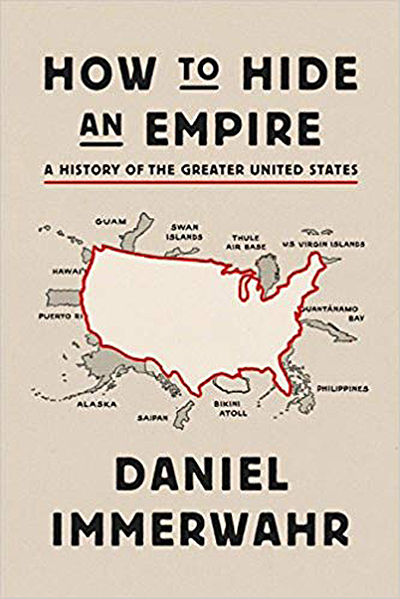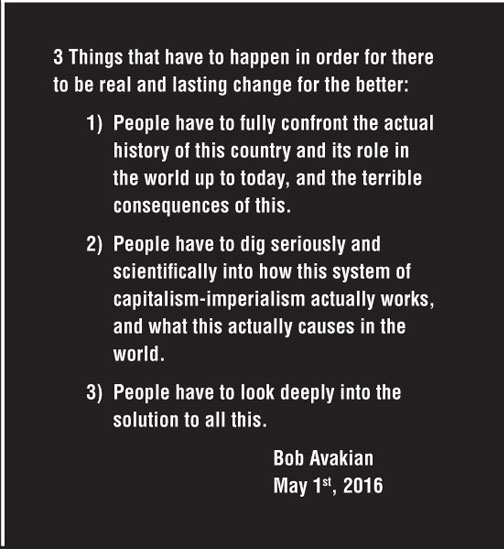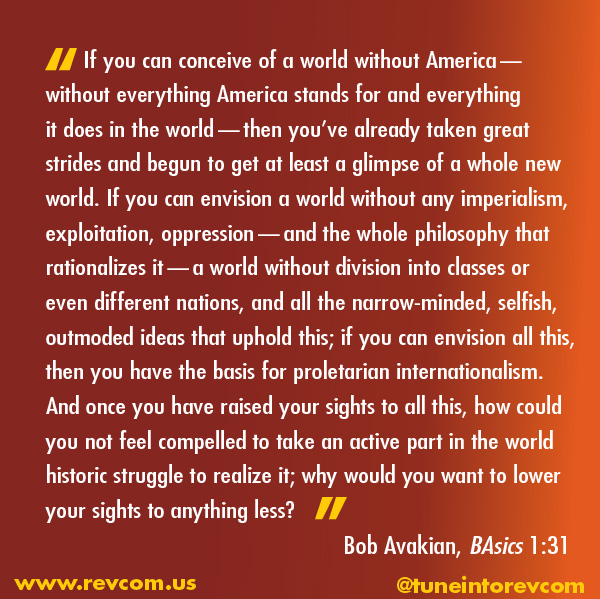Check It Out...
How to Hide an Empire: A History of the Greater United States, by Daniel Immerwahr
| revcom.us
 Daniel Immerwahr has written a valuable history of the U.S. territorial empire. He uses that term to describe lands and peoples conquered and colonized by the U.S. and ruled under its jurisdiction. Much of this is hidden and suppressed history. As Immerwahr says early in the book: “At various times, the inhabitants of the U.S. Empire have been shot, shelled, starved, interned, dispossessed, tortured, and experimented on. What they haven’t been, by and large, is seen.”
Daniel Immerwahr has written a valuable history of the U.S. territorial empire. He uses that term to describe lands and peoples conquered and colonized by the U.S. and ruled under its jurisdiction. Much of this is hidden and suppressed history. As Immerwahr says early in the book: “At various times, the inhabitants of the U.S. Empire have been shot, shelled, starved, interned, dispossessed, tortured, and experimented on. What they haven’t been, by and large, is seen.”
The book divides this history of America’s territorial empire into three phases. The first, for much of the 19th century, is westward expansion on the U.S. mainland—centrally involving the genocidal extermination, expulsion, and forced containment of Native Americans.
The second phase takes place mainly outside the North American continent. There is the annexation of uninhabited islands in the Caribbean and Pacific; then Alaska; and, later, from 1898 until 1900, the conquest and absorption of the Philippines, Puerto Rico, Guam, Hawai′i, Wake Island, and other Pacific territories into an overseas empire. This is what Immerwahr maps as “the greater United States.”
He tells of America’s brutal takeover of the Philippines. It is a story of waterboarding torture, concentration camps, “take-no-prisoners” military tactics, and deliberate starvation—resulting in the deaths of some 775,000 Filipinos between 1899 and 1903. He tells of colonized Puerto Rico being turned into a grisly research laboratory for the U.S. medical industry. Puerto Ricans served as subjects for experimental medical research—from mustard gas to birth control pills and cancer treatment.
The book reveals how racism and white supremacy, under the banner of “Manifest Destiny,” are completely entwined with the forging of America’s empire.
The peak of the U.S. territorial empire came at the end of World War 2. Added up, the population of America’s colonies (like Puerto Rico) and military occupations (as in parts of Korea and all of Japan) was 135 million. That number is slightly more than the population on the mainland at the time!
Immerwahr argues that the third and most recent phase of territorial empire pivots on the establishment of a network of overseas military installations straddling the globe. These 800 bases serve as staging grounds for military aggression (like U.S. bombing missions), as GPS antenna stations for drone attacks, and as detention centers and torture sites, like Guantánamo Bay in Cuba.
Immerwahr does not address the U.S.’s post-World War 2 strategy of neocolonialism. This is the vast modern-day colonialism of indirect rule over countries in Africa, Latin America, and Asia. It is mainly exercised through client regimes that serve U.S. imperialism and that are dependent on the U.S. economically and militarily. This is a weakness of the book—but Immerwahr’s focus is on the territorial dimensions of U.S. imperialism.
There’s a tremendous amount of illuminating detail in the book. There are helpful charts and maps. And Immerwahr weaves his narrative of “the greater United States” with outrage over the crimes of the U.S. empire and with compassion for its subjects and victims. Recommended.


Get a free email subscription to revcom.us:

